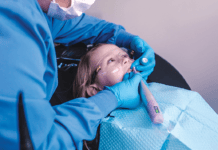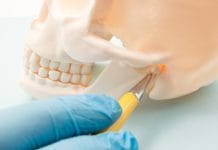Behcet’s disease is an autoimmune disorder which attacks the blood vessels and creates inflammation. “It is known as a multisystem inflammatory disorder characterized by ulcers affecting the mouth and genitals, various skin lesions, and abnormalities affecting the eyes.3” Behcet’s disease is most commonly found in Japan, China, Turkey, and Iran, also known as the “Old Silk Route;” it is the main cause of blindness in these countries.2 Behcet’s disease affects males and females, but males often have more severe cases than females.4
Behcet’s Disease is rare in the United States, but cases have been reported here. It is a hard disease to diagnose and takes a long time for doctors to rule out other diseases before coming to this conclusion because it has many similarities to other autoimmune diseases.1 The reason for this is because Behcet’s disease doesn’t have specific testing methods, and while there is a genetic marker, just because you have the gene doesn’t mean you have Behcet’s disease. However, having HLA–B51 is a risk factor for Behcet’ disease.2
There are three subdivisions of Behcet’s: neuro, ocular, and vasculo-Behcet’s.3 The most common symptom is frequent mouth sores, followed by genital sores, and inflammation of the eye. Other symptoms are rashes/skin lesions and swelling and arthritic pain. Behcet’s disease is not contagious and can be treated. Most popular treatments are medications such as corticosteroids and immunosuppressive medications. Other medications used to treat sight-specific issues are eye drops, ointment for sores, and mouthwash for mouth ulcers.1
Behcet’s disease can present drastically different from patient to patient, and most patients don’t have multiple symptoms at once. This is another reason this disease is hard to diagnose. Symptoms come and go sporadically, leading doctors to think that symptoms are correlated to a different issue than Behcet’s. In other countries, the disease often progresses to blindness before doctors are able to make a definitive diagnosis. While some people might only have sores and inflammation of joints, this is considered a mild case; others may have more serious issues like blood clots, swelling of the spinal cord and brain, and blindness.2
Oral manifestations of Behcet’s disease are mouth ulcers. Often, doctors will do a history report on the frequency of oral ulcers before diagnosing Behcet’s. Most patients with Behcet’s suffer mouth ulcers three or more times per month.1 These ulcers and sores can be clustered or single and usually much more painful than a normal sore or ulcer. It is important to give patients instructions to avoid high citrus diet intake to lessen the frequency of the sores as much as possible. Mouthwashes containing Colchicine, Xylocaine or Lidocaine, and Benadryl are prescribed or recommended to help temporarily relieve pain.4
Along with medications, this can be a manageable disease and is treatable. Over time 60-70% of patients need minimal treatment and have minimal pain, but it all depends on the severity of the disease.4 There are still many unanswered questions about this disease regarding genetic risk factors and environmental risk factors; research is currently being done to help understand the pathogenesis of Behcet’s disease.4
As dental professionals, it is important to keep Behcet’s disease on our radar and ask questions to patients who seem to have regular bouts of ulcers or sores in the mouth. Keeping an active log in our documentation on how often oral symptoms occur can help pinpoint and possibly lead to a definitive diagnosis. We can also use this opportunity to educate patients on Behcet’s, give oral hygiene instruction, and recommend patients keep us up to date about this medical issue.
SEE ALSO: Why Dental Hygienists Should NEVER Treat Patients with Active Oral Herpes
References
- org. (2018). Behçet’s Disease | Arthritis Foundation. [online] Available at: https://www.arthritis.org/about-arthritis/types/behcets-disease/ [Accessed 28 Nov. 2018].
- Johns Hopkins Vasculitis Center. (2018). Behcet’s Disease • Johns Hopkins Vasculitis Center. [online] Available at: https://www.hopkinsvasculitis.org/types-vasculitis/behcets-disease/ [Accessed 28 Nov. 2018].
- NORD (National Organization for Rare Disorders). (2018). Behçet’s Syndrome – NORD (National Organization for Rare Disorders). [online] Available at: https://rarediseases.org/rare-diseases/behcets-syndrome/ [Accessed 28 Nov. 2018].
- org. (2018). Vasculitis Foundation » Behcet’s Disease. [online] Available at: https://www.vasculitisfoundation.org/education/behcets-disease/ [Accessed 28 Nov. 2018].












